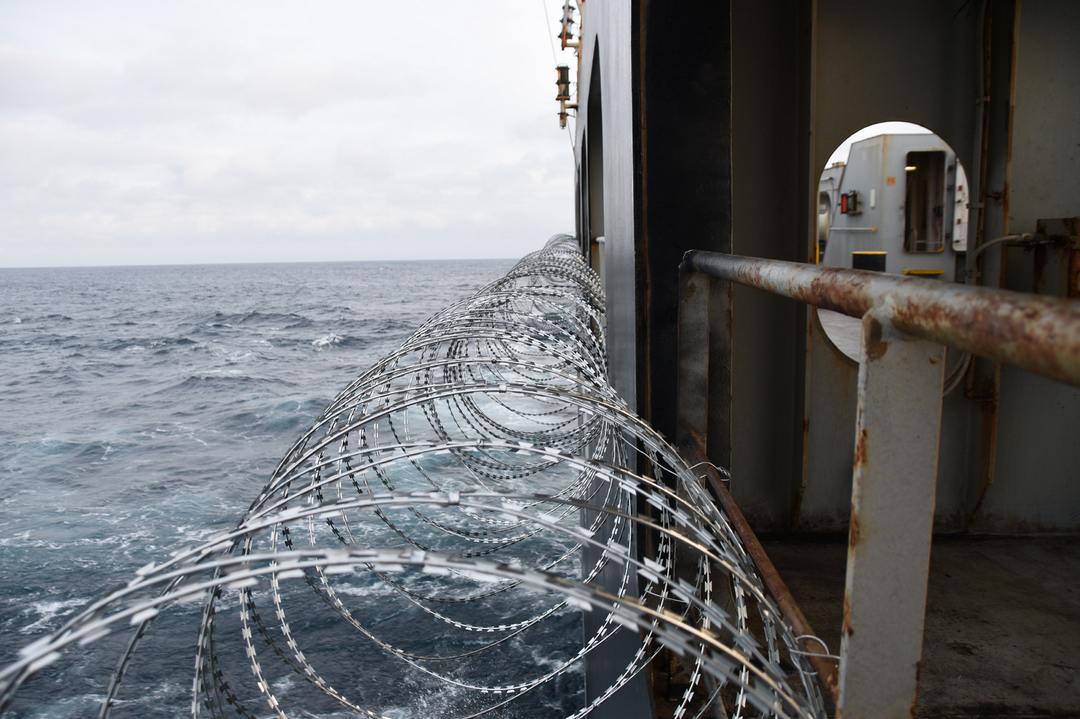21 incidents of maritime piracy and armed robbery at sea have been recorded for the first nine months of 2023, in comparison to the 19 incidents recorded in all of 2022, according to the ICC International Maritime Bureau (IMB) piracy report.
Despite the slight increase in recorded numbers this year, the state of affairs in the past three years is generally considered an overwhelming improvement over previous years, especially in 2020 where a peak of 123 incidents was recorded.
While acknowledging other national, regional, and international factors that have led to a favorable trend in incidents, a Senior Researcher at the Faculty of Academic Affairs at the Kofi Annan International Peacekeeping Training Centre (KAIPTC), Afua Agyeiwaa Lamptey has highlighted the role of the Yaoundé Architecture in quelling the menace of armed robbery and maritime piracy in the Gulf of Guinea.
Speaking on the Eye on Port program, she said that 10 years down the line some successful interventions in the Gulf can be attributed to the implementation of the maritime security architecture.
“Between 2010 and 2020 the International Maritime Bureau for instance recorded that there were about 600 attacks in the Gulf of Guinea and that led to 648 people kidnapped for ransom. The UNODC also estimates that about 4 million dollars alone was used in paying for ransoms but if you look at the picture today, since 2021, the issue of piracy has gone down drastically leaving people to wonder what the cause is,” the Senior Researcher at KAIPTC disclosed.

She cited critical cases where the implementation of the architecture came into play, thwarting piratical and kidnapping attempts. This includes the rescue of product tanker Maximus in February 2016 and in 2020, where a hijacking of the fishing vessel, Hailu Feng II off the coast of Cote d’Ivoire was overturned.
“The attack on Hailu Feng II was done at the height of COVID-19 showing that, even though the international navies had all left our waters, the Yaoundé Architecture partners rallied together, spread information swiftly and they apprehended the pirates,” she highlighted.
June this year marked the 10th anniversary of the adoption of the Yaoundé Architecture, which was created to improve cooperation among West and Central African states towards addressing maritime insecurities.
Mrs. Lamptey recalled the early days when the Gulf of Guinea had become a piracy hotspot. She stated that an armed robbery attack in Limbé, a coastal town in Cameroon, in 2008, in which the thieves made off with huge sums of money by boat, combined with frequent attacks in Benin and Nigerian waterways, prompted early efforts in the region to confront the threat openly.
The recurrent attacks caught the attention of both local and international bodies requiring urgent mitigating action which subsequently led to the June 2013 summit in Yaoundé, Cameroon.
The Yaoundé Summit led to the creation of three mechanisms: the Yaoundé Code of Conduct, the Heads of States Declaration, and the Memorandum of Understanding between regional organisations. This set of instruments inspired the elaboration of the Yaoundé Architecture.
The Yaoundé Architecture comprises the Interregional Coordination Centre (ICC), the coordination and information-sharing structure that connects the Regional Maritime Security Centre for Central Africa (CRESMAC) and the Regional Maritime Security Centre for West Africa (CRESMAO). The coastal space is divided into 5 operational maritime zones where activities are coordinated by five Maritime Multinational Coordination Centres (MMCC).
At the national level, Maritime Operational Centres (MOC) envisaged in each country gather the main stakeholders at sea such as maritime police, customs, fisheries, and environmental protection, as well as the national navies in charge of coordination.
The Senior Researcher at the Kofi Annan International Peacekeeping Centre said despite these accomplishments, however, some impediments derail the full implementation of the Yaoundé Architecture including inadequate funding, inadequate technological backing, reluctance on the part of some member states to create and implement national maritime strategies and a general poor maritime domain awareness.
Source: Ghana Web





